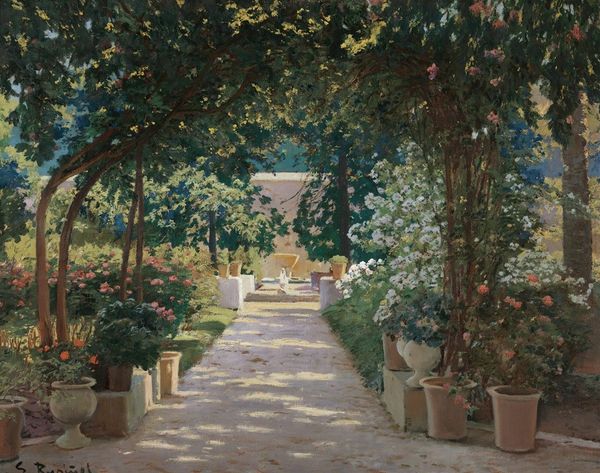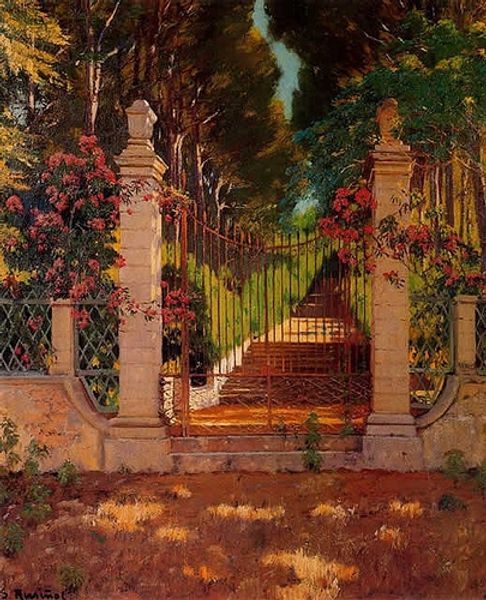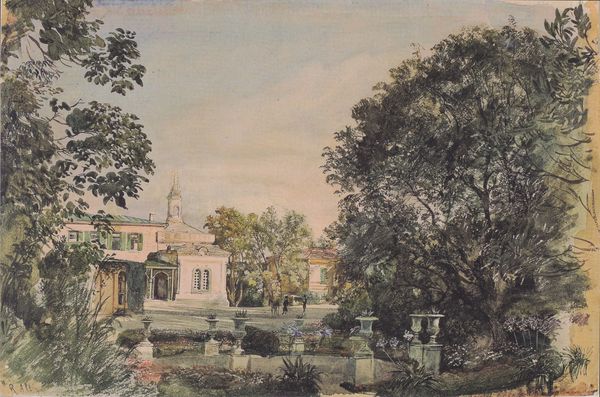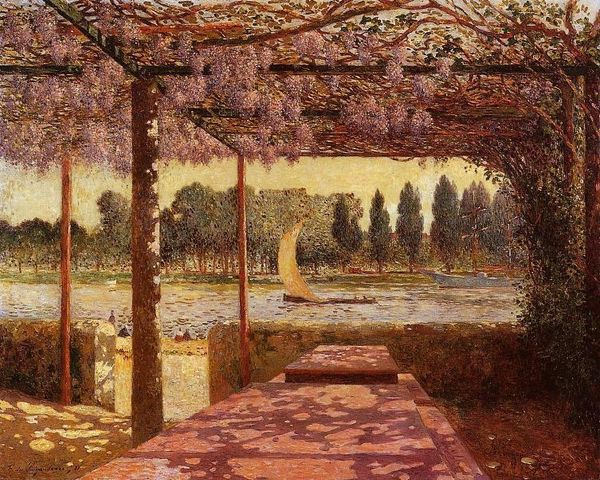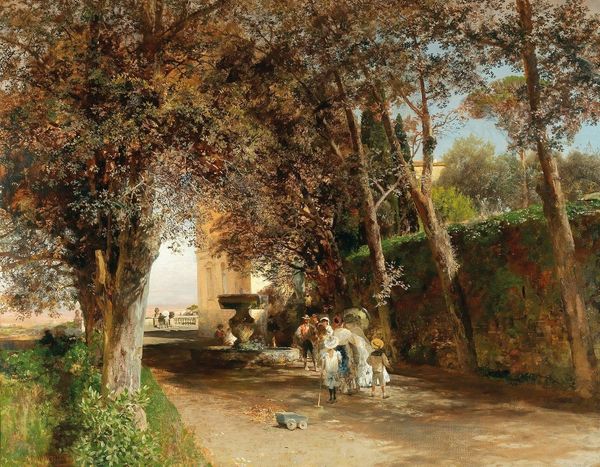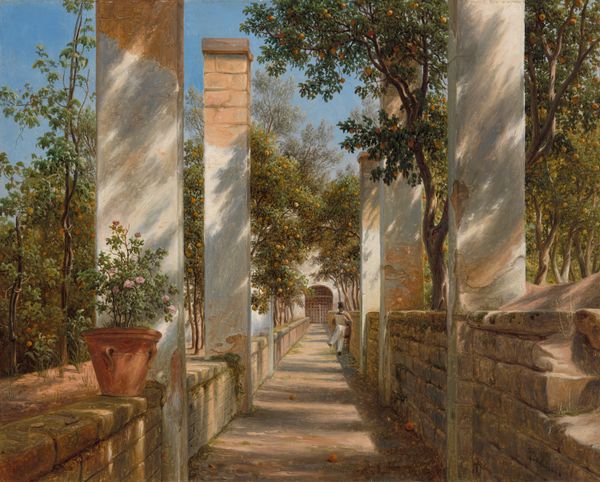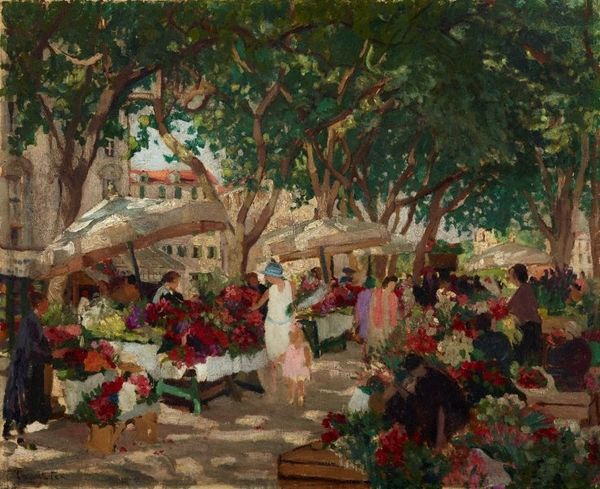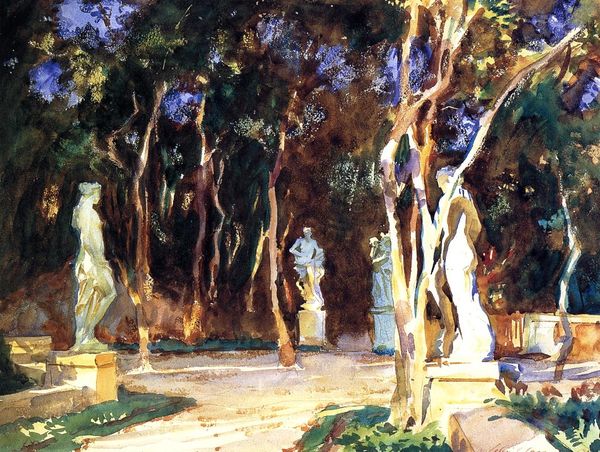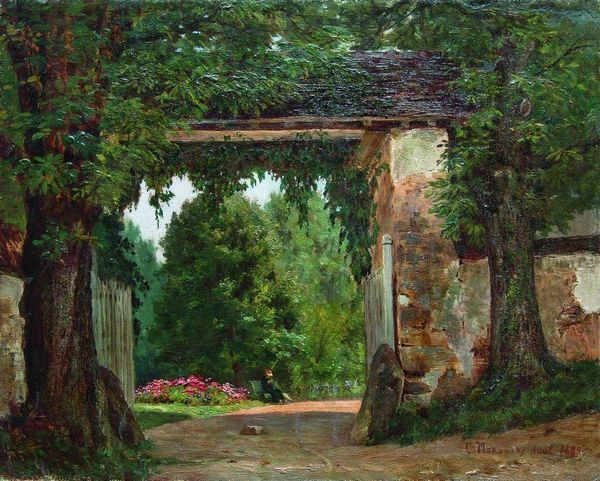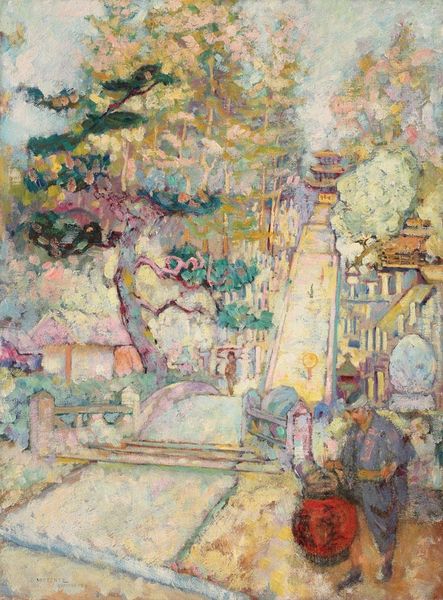
#
tree
#
garden
#
abstract painting
#
impressionist landscape
#
possibly oil pastel
#
nature
#
oil painting
#
fluid art
#
acrylic on canvas
#
animal portrait
#
botany
#
surrealist
#
digital portrait
Copyright: Public domain
Curator: We’re looking at Marianne North’s painting, "The Taj Mahal at Agra, North-West India," created in 1878. Editor: What strikes me is how soft everything is. It's not just the hazy Indian light; even the hard lines of the Taj Mahal seem to dissolve into the scene. Like a dream of India. Curator: Indeed. North's technique here emphasizes atmosphere over rigid architectural precision. Notice the strategic layering of foliage. She uses the garden not just as setting but as a frame. It guides the eye. Editor: Frame is right! Those overarching trees feel like embracing arms, don’t they? Drawing you into the scene, almost as if you were part of the landscape. But also distancing the mausoleum at the same time. A bit contradictory if you think of the usual, reverent approach to this icon. Curator: The brushwork certainly leans toward the romantic, bordering on impressionistic. She captures the Taj Mahal almost as a vision, a luminescent form viewed through the vibrant lens of Indian flora. Observe how the white of the monument is echoed in the lighter tones of the sky. Editor: The tiny figures near the walkway are a neat contrast. Their presence is almost secondary. The entire scene feels intensely private, and quiet… Even though the location is so iconic, you know? Like a secret garden holding the secret of an immortal love. Curator: Absolutely. It underscores the monument's scale. Furthermore, it situates the human experience in dialogue with a powerful symbol of Mughal artistry. And consider the visual rhythm, from the densely painted foreground to the more airy and delicate rendering of the Taj itself. Editor: You know, it also brings forward the tension between natural growth and imposed order. Those gardens had to be kept, planned to stay just that wild. It is a fun reflection on art versus life. It’s an interesting filter to observe the grand design through, if that makes any sense. Curator: Yes, a point well taken. It introduces a subtle commentary on the curated versus the wild, the eternal versus the ephemeral. It all serves a sophisticated interplay of contrasts and observations. Editor: All said, I am leaving with that soft, hazy image. Like a perfume of jasmine lingering on warm stone. Curator: Indeed. Marianne North invites us to contemplate not merely the Taj Mahal as an object, but as a place interwoven with history, personal experience, and artistic sensibility.
Comments
No comments
Be the first to comment and join the conversation on the ultimate creative platform.
